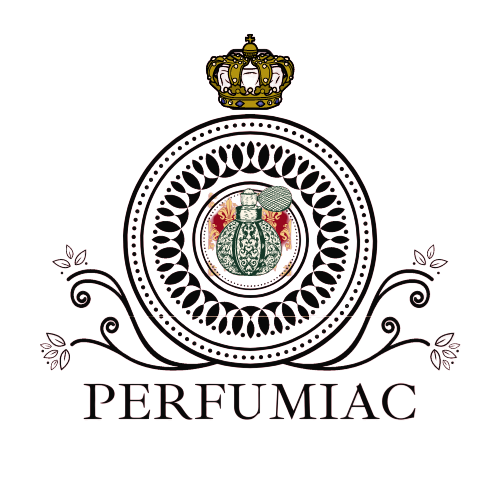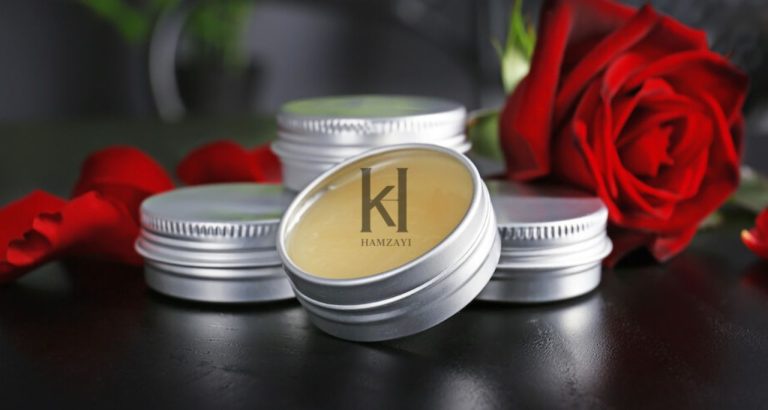What Are Perfume Notes? Everything You Want To Know
Different types of notes make up a fragrance in the same way they do in music. Anyone who enjoys smelling things should become an expert in perfume notes.
You will always be able to locate the perfect fragrance if you understand the components that make up your scent.
We are scent specialists, and our goal is to develop fragrances that will put a smile on your face. To assist you in locating the fragrance that best suits your tastes, we have compiled the following guide.
What Are Notes:
When you hear or read anything about the notes of a perfume, think of them as the components that make up the fragrance. Furthermore, there are thousands of them. Even with a single piece, such as a rose example, several distinct types of rose perfume notes may be achieved by distilling and extracting the rose. There is no set limit on the number of notes that can be included in a scent.
Types:
Nevertheless, virtually all perfumes will consist of at least three notes, which will be organized as follows: a top note, a middle note (also known as the heart note), and a base note to make perfumes notes.
- Once your perfume touches your skin, you can immediately smell the top notes, which are typically lighter notes like citrus, herbs, and fruits.
- The middle notes, or heart notes, which tend to be flowery and include rose, jasmine, and ylang-ylang, are then introduced. They may be detected at first, but they actually comprise the fragrance’s heart, which emerges after 10 to 15 minutes. Compared to top notes, they linger on the skin longer.
- Finally, the base notes or fond emerge, which directly relate . They aid in extending the duration of scents by reducing the rate of evaporation. There is an extremely minuscule
- The woodsy scent, musky, coffee, oak moss, and patchouli are only a few of the base notes that a perfumer can utilise because only a (generous) number of them linger on the skin strong enough even to “fix” the smell with perfume notes.

Top Notes:
Since they are scent notes immediately identifiable after application, the top notes of a fragrance are also referred to as opening notes or head notes in certain circles.
The top notes are the ones with the least amount of weight. The lightness of the top notes means that they are also the first to go, yet this does not diminish the significance of the higher notes of the perfume.
The top notes are what the listener takes away initially. They may not be the component of a fragrance that lasts the longest, but they are the first thing you will detect when experimenting with a new scent. The top notes are the initial odours and aromas. That entices you to investigate more, which ultimately leads to the formation of your initial opinion of the fragrance.
Anise, berries, and grapefruit are typical top notes, along with citrus ingredients like bergamot, lemon, and orange zest, as well as fresh herbs (basil, sage, lavender).
Heart Notes:
Heart notes are said to be in the “heart” of a scent because of their descriptive name. This smell layer, also known as middle notes, is the foundation of any fragrance and is said to make up around 40–80 per cent of the finished bouquet.
Just as the top notes begin to fade away, the heart notes start to make an appearance. These notes will significantly impact the base notes that are to follow. There is no room for flippancy when it comes to heart messages!
The notes located in the centre of the scale, sometimes known as the heart notes, have a molecular weight somewhat more significant than the top notes. These are the ones that may be detected after one or two hours, and they often have a flowery or spicy aroma.
The core of a scent needs to have a pleasant and well-rounded aroma. As a result, aromas such as cinnamon, rose, ylang-ylang, lemongrass, and neroli are all typical examples of smells that are considered heart notes.
Base Notes:
Once the top notes have fully dissipated, the lower sounds, known as the base notes, will start to become more noticeable. When considered separately, base notes contribute 10–25% to the whole aroma. However, the combination of the heart notes and the base notes adds another layer of depth and complexity to the smell.
The top notes are responsible for creating the first impression, while the base notes are linked to the dry-down phase of the scent, and as a result, base notes are the ones that will generate the last and most enduring impression.
It should not come as a surprise that the elements with the most decadence, richness, and unctuousness are the base notes. “The base notes remain on the skin and garments for a longer period of time.” The composition of the base notes will be the determining factor in determining which scent will last the longest.
The lowest, or base note is typically the richest and smoothest, and it also has the longest duration of the three notes. Cedarwood, sandalwood, vanilla, patchouli, and musk are all examples of base notes.
How Do You Recognize Fragrance Notes?
The amount of time that has passed following the perfume application can be used to help distinguish different notes within the fragrance.
- A perfume’s top notes are detected almost immediately after the fragrance is applied to the skin
- The essence of the fragrance is created by the heart notes, which emerge after the first explosion of the scent has subsided.
- The base notes of a fragrance are the ones that linger in your nose the longest and are the ones you tend to recall the most.
The fragrance takes on new dimensions with the addition of each individual note. The terms “fresh,” “floral,” “spice,” “fruits,” “woods,” and “musk” collectively make up some of the most often utilized categories of fragrance notes. Each of these terms is frequently employed in particular note categories.
For instance, clean and flowery aromas are nearly always found at the top of the note pyramid. Still, woodsy and musky scents are more likely to be found nearer the pyramid’s base.
Categories:
Following is a rundown of the many categories of perfume notes, each followed by an explanation of how they should be applied.
1) Fresh Notes:
Because of their airy and lemony quality, fresh notes are frequently used in top musical arrangements. The brightness and sweetness of a scent are contributed by notes such as orange and bergamot, but lemon and bergamot have a more bitter and astringent quality. They do, however, possess a scent that is extremely light and clean, which does not last for an especially long time but does give an initial feeling of freshness.

2) Chypre Notes:
“Patchouli, oakmoss, rose, jasmine and bergamot come together to create this harmonious symphony. It is possible to modify it in a wide variety of ways; the most recent tendency is to incorporate gourmand and fruity notes in order to update the traditional chypre structure or an excessive amount of musk in order to make it more pliable in notes chart.

3) Fruity Notes:
Middle notes are the most typical usage for fruity notes because of their ability to effortlessly combine with other notes and offer an additional layer of depth to a scent. Notes like apple and strawberry, for instance, exude a sweet and luscious atmosphere, but blackberry imparts a deep and earthy aroma to the whole composition.

4) Floral Notes:
Floral notes offer a natural sense to a scent. They may be combined with other notes to create a more dramatic fragrance, and they are most commonly used as top or heart notes. Another common flower note is jasmine, which has a perfume that is both fruity and white floral, while ylang-ylang imparts a more exotic quality to the fragrance.

5) Woody Notes
Sandalwood and patchouli are two types of wood notes that are frequently utilized in the base of a fragrance to lengthen the period that the scent will remain in the air. Some wood notes, like cedarwood and oud, have a pleasant, sweet aroma, in contrast to the majority of wood notes, which have an earthy flavour. They have a very long shelf life and contribute a base note to the fragrance.

6) Spice Notes:
Spice notes are known to portray a scent with a sense of cosiness and power. These notes combine especially well with floral notes when the perfume is at its centre. Some notes, such as cinnamon and nutmeg, impart a spicy and sweet flavour, while others, such as rosemary and basil, have a herbaceous aspect that does present a great fragrance.

7) Musk Notes:
In perfumes, musky notes may be found in the base notes the vast majority of the time. Their abundance contributes to the completion of the foundation and lengthens the duration of the fragrance. Because there are so many varieties of musk, from black musk to cashmere musk, these smells have the ability to impart a quality that is distinct to every fragrance.
8) Fougere Notes:
Although Fougere fragrances were once only based on components like tonka bean, patchouli, geranium, lavender, and bergamot, the style has since changed significantly and it is now typical to find gourmand notes, which are more appetizing ingredients like caramel and cocoa.

Conclusion:
The attraction of a perfume is significantly influenced by the fragrance notes. The composition of a perfume’s various notes and how they react with your skin give it its individuality. The aroma of perfume simply wouldn’t be as lovely without blending several notes.
In the end notes in perfume are adjectives used to describe the smells detected when a scent is applied, divided into top/head notes, middle/heart notes, and base notes. These categories refer to grouping of fragrances that may be detected depending on how long after applying cologne. The evaporation method and the scent’s intended usage are considered while creating these notes.
When respective base or heart notes are present, the scent perceived when the top notes are highest is changed. Similarly, the smell of base notes in the dry-down frequently varies based on the fragrance’s heart notes. This is an example of how the existence of one note can change how another is considered.
FAQs:
How to Pick Fragrance Notes?
Selecting your favourite notes can be difficult because there are so many. Learning about the fragrance wheel is one step in discovering your personal tastes. Once you know the notes you prefer, browse our selection of colognes and fragrances to find your unique scent.
How does Top Notes Smell in perfumes?
The top notes are the very first part of perfume notes collectively. They smell very first in perfume.
They are not very longlasting but give the very first impression of the fragrance and make a person feel potent about his frag







